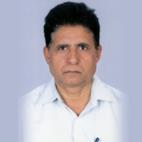Invited Speaker---Dr. Suresh Chand Rai

Dr. Suresh Chand Rai
Professor& Head, Department of Geography, Delhi School of Economics, University of Delhi, India
Prof. Suresh Chand Rai, Professor & Head, Department of Geography, Delhi School of Economics, University of Delhi. He did his Masters in Geography (1979) and Doctor of Philosophy (1984) from Banaras Hindu University. His significant contributions are in the field of land and water resource management. His work has been outstanding on the Integrated Watershed Management in the Sikkim Himalaya have been recognized through the Soil and Water Conservation Society of USA, Award, 1999. The extensive studies made by Dr. Rai on various aspects of mountain hydrology have not only helped in understanding the structure and function of the systems, but also in finding out means of how to make the system sustainable. He has published more than 90 research papers in various impact factor/peer-reviewed journals and books (h-index-15). He has also authored 8 books to enrich the discipline. Since 2010, he is serving as Secretary General of National Association of Geographers, India (NAGI), the largest society of the Geographers in India.
Speech Title: Spatio-Temporal Variability of Groundwater Recharge in Bist-Doab Region of Punjab, India
Abstract: The present era of rapid change in land-use/cover pattern and higher rate of groundwater extraction to meet daily needs of the increasing population has led more pressure on the groundwater resources. The present study aims to understand the spatial and temporal variation in the groundwater recharge in one of the most agricultural productive regions of Punjab, India i.e. Bist-Doab. The present study used groundwater balance model WetSpass for average conditions during last two decades to analyses the groundwater recharge in the area. It was found that most of the precipitation was lost in the form of evapotranspiration as most of the land is under vegetation cover mostly as croplands. In the forested areas of Hoshiarpur district, as the evapotranspiration is the higher, the rate of recharge was found less. In the northern region, Kandi belt comprising of boulders, pebbles, gravels, sand and minor layer of clay forms the major recharge belt of alluvium by allowing infiltration of rainfall. The rate of recharge decreases in the central region as the increase in clay content. Spatially, the rate varies with respect to land-use/cover pattern. As the meteorological conditions do not fluctuate much over the years and soil type remains the same for a long geological time, change in land-use/cover pattern have a great impact on the groundwater recharge in the region. The presences of rivers and canals in the region have also contributed to the groundwater recharge despite being the major agent of water losses through evapotranspiration. Above all, the decrease in the rate of groundwater recharge over the years is the result of land-use/cover change in the area.



